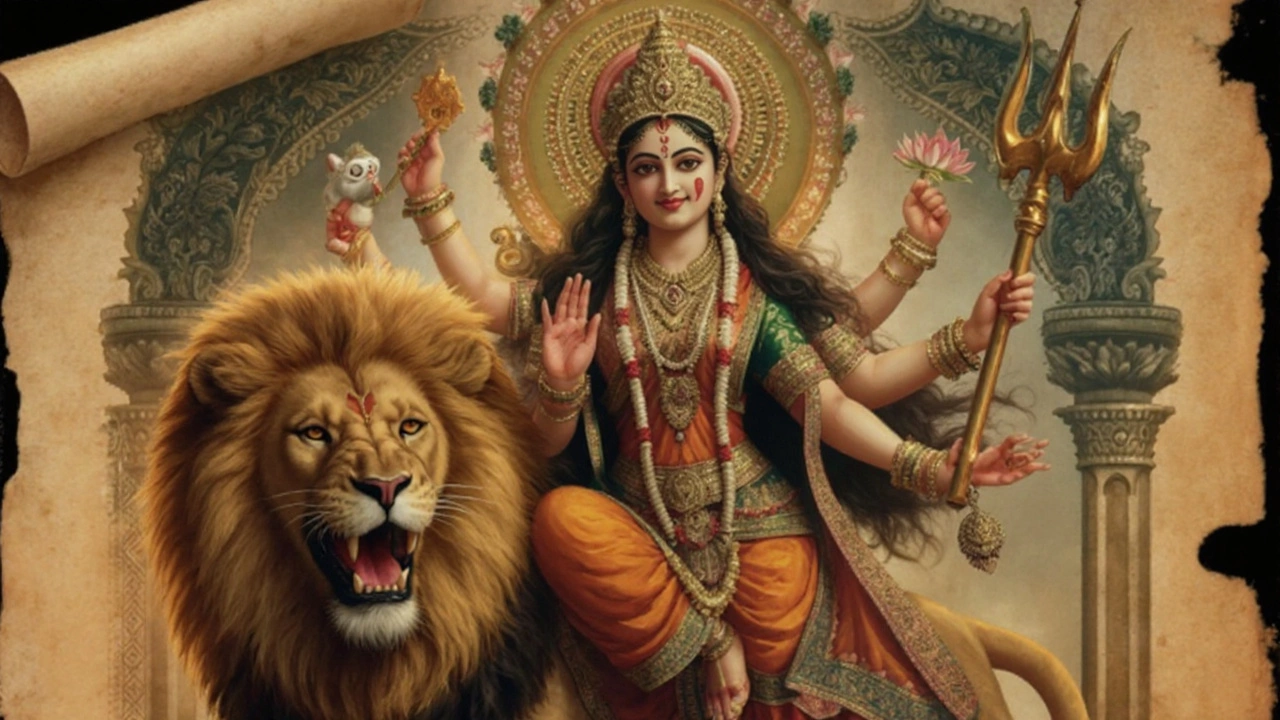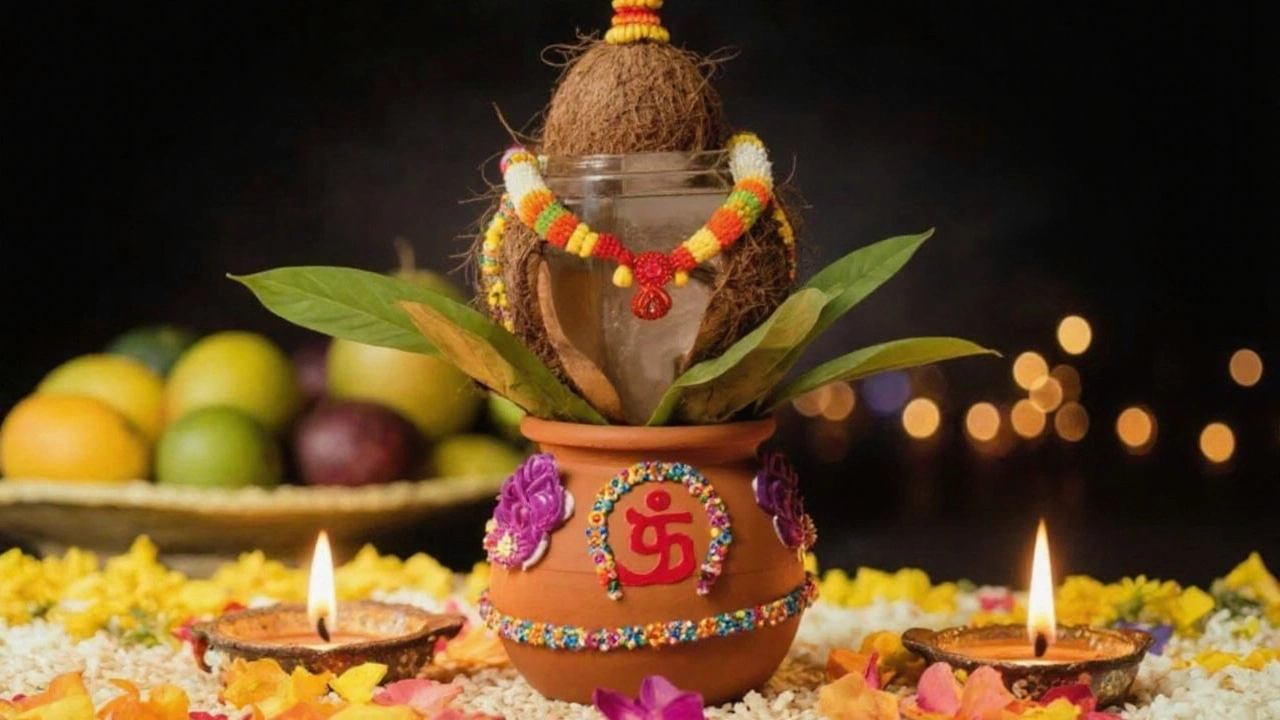On Sunday, March 30, 2025, millions of Hindus will light the first lamp of Chaitra Navratri 2025, a nine‑day celebration that blends myth, devotion, and seasonal renewal. The opening ceremony, known as Ghatasthapana, sets the tone for a week of elaborate pujas, community gatherings, and a final nod to Lord Rama’s birthday on April 7.
Key Rituals and Daily Celebrations
Ghatasthapana, or Kalash Sthapana, is more than a decorative act. Families place a rounded earthen pot on a raised platform, fill it with fresh water, crown it with mango leaves, and top it with a coconut. The pot becomes a temporary shrine, inviting the presence of Goddess Durga into the home. Performed in the early morning, the ritual is accompanied by chants of the Durga mantra and the offering of flowers.
Once the kalash is established, each of the nine days is devoted to a specific avatar of Durga. Devotees observe fasts—sometimes a full water fast, other times a grain‑free diet—while reciting the Navratri prayers and performing aarti at dusk. The schedule follows a set order:
- March 30 – Pratipada: Ghatasthapana & Shailputri Puja
- March 31 – Dwitiya: Brahmacharini Puja
- April 1 – Tritiya: Chandraghanta Puja
- April 2 – Chaturthi: Kushmanda Puja
- April 3 – Panchami: Skandamata Puja
- April 4 – Shashti: Katyayani Puja
- April 5 – Saptami: Kalaratri Puja
- April 6 – Ashtami: Mahagauri Puja & Kanya Pujan
- April 7 – Navami: Siddhidatri Puja & Ram Navami
Ashtami shines with Kanya Pujan, where pre‑pubescent girls are worshipped as living embodiments of the goddess. Elders place garlands, apply tilak, and offer sweets, symbolizing respect for feminine energy at its purest. The following day, Navami brings the final worship of Siddhidatri and the overlapping celebration of Ram Navami, linking the triumph of Durga over Mahishasura with the birth of Lord Rama.

Mythological Roots and Regional Variations
The origin story pulls from the Devi Mahatmya, a text embedded in the Markandeya Purana. According to the legend, the demon Mahishasura earned a boon that no man could kill him. When his tyranny threatened the cosmos, the trinity of Brahma, Vishnu, and Shiva combined their divine forces to birth Durga, a ten‑armed warrior wielding a range of weapons. She fought the demon for nine consecutive nights, finally slaying him on the ninth day—a narrative that mirrors the nine nights of Navratri.
While the core rituals stay consistent, the festival’s flavor changes from state to state. In Punjab and Haryana, massive community gatherings called “Jagrans” keep the night alive with devotional songs and drums. In Gujarat, elaborate “Garba” dances spin around a central lamp, turning worship into kinetic art. In Bihar and Uttar Pradesh, the focus leans heavily on fasting and reciting the “Durga Saptashati,” a 700‑verse hymn, often done in groups at local temples.
Urban centers like Delhi and Mumbai witness a blend of tradition and modernity. Young professionals may attend sunrise yoga sessions before the kalash ceremony, and digital platforms stream live puja broadcasts, letting diaspora communities join in from abroad. Yet, despite these contemporary twists, the underlying message stays the same: reverence for the divine feminine and a collective hope for prosperity and protection in the coming year.
In addition to religious observances, many local economies benefit from the festival. Vendors sell rangoli powders, brass idols, and festive sweets; artisans craft decorative kalash pots; and transport services see a surge as pilgrims travel to famous temples like the Vaishno Devi shrine and Kamakhya Temple. These ancillary activities underscore how deeply intertwined Chaitra Navratri is with cultural and economic rhythms across India.
As the final day approaches, the air fills with anticipation. The chants grow louder, the aarti flames brighter, and families gather to share traditional dishes such as “puris,” “halwa,” and “puran poli.” Whether observed in a modest village courtyard or a sprawling urban temple, the nine‑day journey offers a potent reminder of resilience, community, and the timeless power of devotion.
